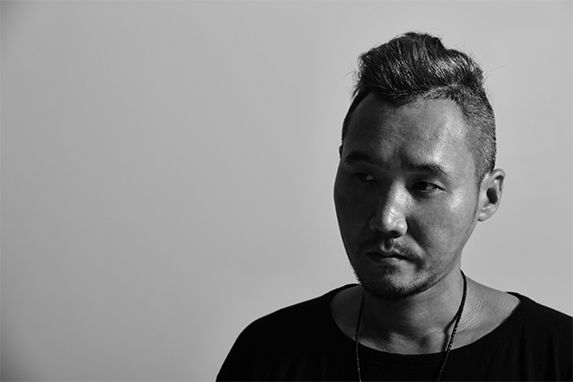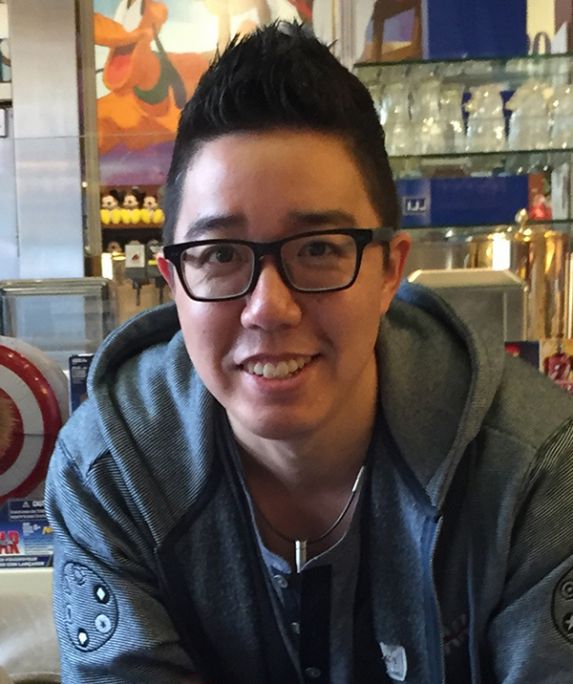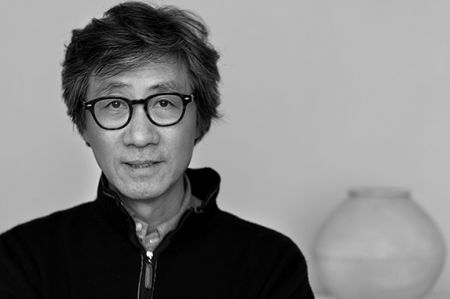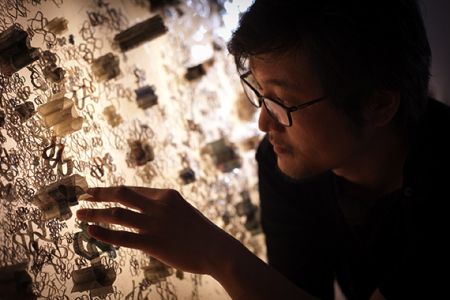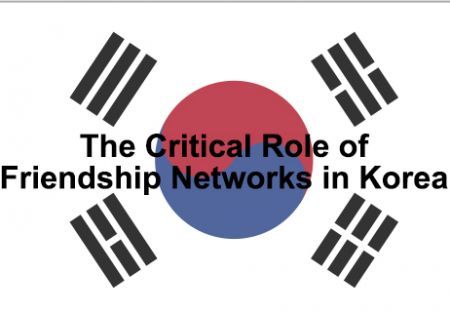LIFESTYLES (12)
Fashion Designer turns Imprecision into Perfection
D.GNAK, a Korean-born fashion designer trained in New York, believes truly outstanding designs don't need to make sense and has created intriguing pieces that fail tofollow mainstream design concepts. His logo, which is the reverse mirror image of his name, captures the uniqueness of his brand that goes against popular templates. Launched in 2008, the D.GNAK men’s clothing line has achieved global success. KANG. D. shared his international influences and inspirations with Seoul Journal
Bringing Comics to the Big Screen
After debuting in the 90’s with his artwork in the best-selling comic book series: Tomb Raider, Excalibur,Weapon X, and The Uncanny X-Men, Andy Park made a name for himself in the entertainment industry. Currently working as a professional concept artist for Marvel Studios, he has provided illustrations and designs for top-tier projects such as The Avengers, Thor, True Blood, God of War and Iron Man. Park talked to Seoul Journal about his career in the unique developing field of concept art, his love for comics and his Korean heritage.
U.S. Ambassador to the Republic of Korea: Building Lasting Relations
When it comes to international relations, Mark Lippert, U.S. Ambassador to the Republic of Korea, comes with a wealth of experience. He has served as a foreign policy advisor to various Senators and Senate Committees, including his work as the Foreign Policy Advisor for then-Senator Obama from 2005 to 2008. After Mr. Obama was elected as president, Mr. Lippert served him as Deputy Assistant to the President and Chief of Staff for the National Security Council. Mr. Lippert left Washington from 2009 to 2011 to be on active duty in the United States Navy, and upon his return, held senior positions in the Department of Defense. In 2014, he was appointed as the United States Ambassador to the Republic of Korea. Since then, he has served his country as a representative to build and maintain peaceful relations between the two countries. On March 5th, 2015 during an event organized by the Korean Council for Reconciliation and Cooperation, which advocates peaceful reunification between North and South Korea, a man named Ki-Jong Kim, who was protesting annual joint military drills between South Korea and the U.S. military, slashed Ambassador Lippert in the face and jaw shortly before the ambassador was supposed to give a speech. The gash required 80 stitches. In addition, the ambassador was also slashed five times on his left arm and hand. Ki-Jong Kim was sentenced to 12 years in prison for attempted murder, assaulting a foreign envoy and business obstruction. Adding on to the ambassador’s expertise in international relations and diplomacy, Mr. Lippert brings a personable approach to his position; his fast acquisition of the Korean language, his love of walking in the streets of Seoul, and his social media accounts that share his daily life in Korea show the endearing personality he brings to his job. He currently resides in Seoul with his wife, Mrs. Robyn Lippert, his son, Sejun Lippert, and a pet dog, Grisby, a lovable basset hound who has his own Twitter account. Seoul Journal Executive Editor Anthony Al-Jamie about his experience as an ambassador and his experience in Korea.
Businessman-turned-photographer communicates with his subjects through still-life photography, placing emphasis on sensibility
Korean-born Bohnchang Koo studied at Yonsei University with a major in Business Administration, only to discover that he was not happy as a businessman. When he was younger, Koo enjoyed playing with craftsmanship, but he believed he wasn’t qualified as an artist, so he never insisted on going to art school. After serving the army for three years, he studied in Hamburg, Germany. There, he found his possibilities, talents, and sensibility — a sensibility that was shameful in Korea. Because the students and professors in Germany encouraged his sensibility, he became confident in finding what he wanted to do with his life. What he found was photography. Since discovering his passion, Koo’s works have appeared in over 30 solo exhibitions and he has won three notable awards. Aside from being a professional photographer, Koo was a professor at Kaywon School of Art and Design, Chung Ang University, Seoul Institute of the Arts, and a visiting professor in London Saint Martin School. Seoul Journal executive editor Anthony Al-Jamie spoke with Koo about his photography, how he transitioned from a businessman to a photographer, and what inspirations he gets from other photographers to incorporate into his own works.
Defying Boundaries through Massive Magazine and Newspaper Sculptures
Yun-Woo Choi received a BFA and an MFA in sculpture from Hong-Ik University, and an MFA from School of Visual Arts. Choi was a recipient of the Jung-Ang Fine Art prize in 2007, the winner of the Year in Review award in the Sculpture and Installation category from See.Me in 2014, and he participated in the Anderson Ranch Art Center’s residency program in Aspen, Colorado. His works have been featured in several shows in the U.S. and Korea, including the Chungju International Craft Biennial and the Busan International Biennial. He currently works and lives in Brooklyn, New York. Seoul Journal talked with Yun-Woo Choi to discuss his views on art and his current works.
Friendships are obviously important in all societies for business as well as for social reasons, but few people go as far as Koreans in their need and compulsion to develop and keep a network of chingu (cheen-goo) or friends.
EIGHT WAYS TO MAKE A GOOD IMPRESSION IN KOREA
Whether you’re travelling to Korea for business or pleasure, showing your respect for Korean culture and traditions is important. Here are eight super nice things you can do for your friends in Korea to make a really good first impression that’ll last!
The basic game plan for any night out among Koreans is to last five rounds which cover five different locations. These rounds often include multiple alcoholic beverages and food across a spectrum of delicacies. It may sound like a basic bar hop from the college days of yore, but for many, they’re no longer in college and still, the need to “hop” from place to place persists. For anyone new to Korea, if you don’t know what the expectations are, you could go hard and fast and end up home in bed before the night has even began according to Korean standards. The rounds can be flexible in order, but do not doubt that there will be multiple rounds with lots of food and drink. Here are the basics before you head out for the first time or for the next time.
What is the most beneficial way to reward your children?
Buy them a new toy? Allow them to stay up later? Let them watch a special TV show?
These may or may not have positive effects, but none of them can compare with the undivided attention of a parent.
Older children may deny that they require attention from their parents; however, it is possible to see the impact extra attention can have. With younger children, the results are often visible straight away. They respond with smiles and can be encouraged to try new things. Eventually you may notice an increase in your child’s self-esteem as they grow older.
Self-esteem is what we build in our children when we give them the attention they require. However, it is important to give children quality attention; just being around your child is not considered quality attention.
A 30-year veteran Marriage Family and Child therapist, mother of five, and grandmother of 10, Lorraine Al-Jamie helps parents to acquire skills that enhance their ability to raise high-functioning and happy children.
The Terrible Twos and Adolescence
Although the terrible twos and adolescence seem far apart, they have much in common. Both are times when children feel a great need for autonomy. Since parents are well aware that children still need us to guide them, we cannot just throw our hands up and give them the freedom they want even though at times we may all be tempted to do so.
To help our children develop skills to become responsible adults, we must provide them with opportunities to make their own decisions whenever safe – and when the consequences of a wrong choice don’t overwhelm. This is the challenge. There is a fine line between deciding what consequence may be too hurtful and which not. It takes courage and faith for a mom or dad to watch their child do something that may cause them to fall down. But it is critical that we do just that so children can learn to be thoughtful and make wise decisions before the consequences become tougher as adults.
How we go about setting limits for our children also is critical. This depends on the age and emotional development of the child. Let us start with infancy. Until around two, babies are usually fairly compliant. And then what is often referred to as “the terrible twos” hits and parents don’t know what hit them. It is extremely important that parents don’t think of their children as being BAD. It is helpful if we view this stage as our child doing what he needs to, to learn more about how the world operates. He must push against limits to learn that they exist, and learn how to cope emotionally when he finds himself up against them.
More...
A SUBJECT that unfortunately is on our minds today is bullying. Some children’s lives become a living hell because they’ve become the tar- gets of a bully or several bullies. Death is the outcome in extreme cases. It is not unknown for a victim to commit suicide to escape from bullying. It appears to me that the attack on this outrage must be two pronged. We must help the victim and protect him physically and psychologically. And we must realize that the bully also desperately needs our help.
Who can help? Many of us: the parents and family of the victim, the parents and family of the bully. Also teachers and educational administrators, coaches and other adult leaders plus anyone who witnesses an incident of bullying. It’s so natural and easy for passersby to not act by telling himself that it’s none of his business and that it is the responsibility of other adults to deal with the situation. But you cannot assume that someone else is going to rescue the child.
30-year veteran Marriage Family and Child Therapist and mother of 5 assists parents in acquiring skills that enhance their ability to raise high-functioning and happy children.
Respect
What outcome are we aiming for?
It is almost universally agreed that the most important job in the world is raising a child, and yet, it is often something we undertake without any preparation. Generally, we parent as we were parented and sometimes this leads to a positive outcome. However, we are not always clear about what outcome we are aiming for.
Blind obedience?
Do we want our children to be blindly obedient? In some cases, “yes.” For example when we shout “STOP” when our child is about to step into oncoming traffic without looking. But how about when we call them to come to us when they are in the middle of some task that is important to them? Are we willing to hear “just a minute, I’m playing a video game.” For some, that is a natural and acceptable response. For others it may feel like defiance. What makes for that difference in our reaction? Generally, it is in the tone of the relationship we have developed with that child.
Mutual respect
When we have built a relationship based on mutual respect and trust, we are much less likely to interpret our child’s response as defiance. For many it is a novel idea that “respect” is a quality that goes in both directions. We are likely to believe that our children owe us respect. We are less likely to understand that our children also want respect.



